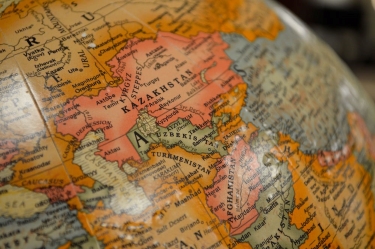With a total population of 1.9 billion (a quarter of the world) and a GDP of US $3.5 trillion, South Asia is the fastest growing region in the world (up to 7.5% per year). Today, its contribution to global economic growth is 15%, by 2040 it may exceed 30%. While maintaining the outpacing dynamics of economic development, South Asia may become the new locomotive of the global economy. According to the World Bank, the region’s economy is projected to grow by 6.3% in 2023. Such data are given in the analytical article by Shakhnoza Kodirova, Chief Researcher at the Institute for Strategic and Interregional Studies under the President of the Republic of Uzbekistan and Farrukh Ermanov, a leading researcher at the same Institute. The article was published by the national news agency of Uzbekistan UzA.
Experts identified several promising areas of interregional cooperation, taking into account the state of relations between the Central and South Asia:
firstly, cooperation in the trade and economic sphere, and in particular, in the agricultural products market, where the goods of the Central Asian countries can occupy their niche.
Thus, every year the countries of South Asia collectively import food products worth about US $ 30 billion (India – $ 23 billion, Pakistan – $ 5 billion, Afghanistan – $ 900 million, Nepal – $ 250 million).
secondly, the implementation of major multilateral projects in the energy sector. Progress in the CASA-1000 interregional energy project is the first step towards the establishment of a regional electricity market in Central and South Asia and also enhances potential for electricity trade between regions.
The implementation of the TAPI project, designed to become a symbol of peace and good neighborliness, will contribute to economic growth due to increased investment, trade development and maintaining stability and security in the region.
thirdly, tourism. According to the ILO, the outbound tourism in Central and South Asia is dominated by interregional trips, which are mostly comfortable and more affrodable due to the income level of the population.
fourth, the expansion of cooperation in the field of science and education. Universities in Central Asian countries, especially medical ones, are becoming attractive to young people from South Asian states, which is explained by the high quality of training and relatively low tuition costs. Currently, about 20 thousand students from South Asia study in Central Asian countries.
About transport connectivity
The authors of the article point out that increased connectivity creates new strategic options for further integrating Afghanistan into regional infrastructure initiatives and the creation of international transportation corridors that are intended to connect the nations of Central and South Asia.
One of such projects is the construction of the Mazar-i-Sharif–Kabul-Peshawar railway, which will connect the South Asian railway system with the Central Asian and Eurasian ones. Approximately 15 million population of the region will be beneficiaries of the project.
The Trans-Afghan Railway is expected to connect with the relevant routes of the China-Pakistan Economic Corridor (CPEC). Furthermore, a closer connectivity between the CPEC and Afghanistan and other Central Asian countries via the Chinese Belt and Road Initiative will the chances of closer regional cooperation.
According to Uzbek experts, the Trans-Afghan Corridor diversifies transport flows in Central Asia. The region will have two routes to the south seas.
On the one hand, there are already existing corridors to the ports of Chabahar and Bandar Abbas, on the other – Mazar-I-Sharif — Kabul — Peshawar will open access to the ports of Pakistan Karachi and Gwadar.
Moreover, the Mazar-I-Sharif—Kabul-Peshawar highway will shorten the delivery time for the countries of South Asia to Central Asia, the CIS and Europe.
For example, transporting goods from Pakistan to Uzbekistan will take only 3-5 days, rather than 35.
In turn, this will reduce the cost of transporting one 20-pound container by almost 3 times. Estimated traffic volumes in the first years of operation can grow to 3 million tons per year, and by 2030 – exceed 15 million tons per year, analysts say.
Furthermore, the railway’s construction will have a multiplicative socioeconomic effect, as seen by the creation of new jobs, the construction of roadside infrastructure, and the creation of conditions for the exploitation of rich mineral reserves along the route.
At the same time, experts urge to consider the Trans-Afghan railway not only from the perspective of economic prospects but also as a part of efforts to bring about peace and progress in Afghanistan, since sustainable economic development removes the conditions and causes that foster the growth of terrorism and extremism.
Therefore, by supporting the establishment of Afghanistan as a bridge connecting Central and South Asia, it is possible to make a significant contribution to ensuring regional security and stability of these regions.
The implementation of infrastructure projects and the initiatives for expanding and deepening trade cooperation are becoming particularly relevant for the development of connectivity in Central and South Asia. ///nCa, 15 February 2023
